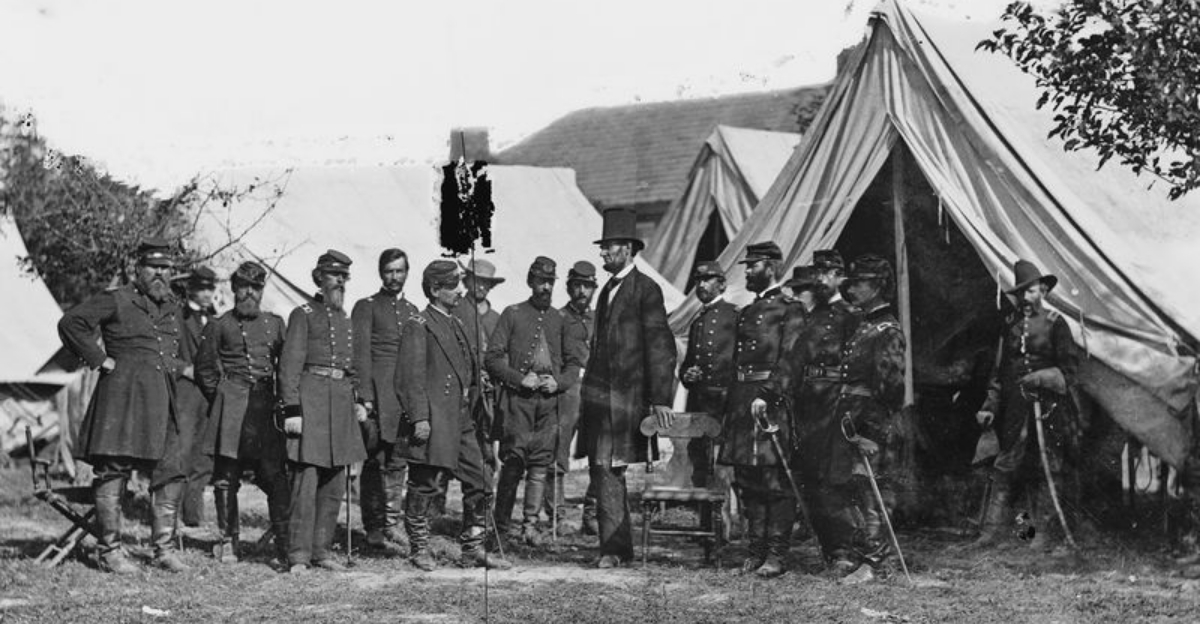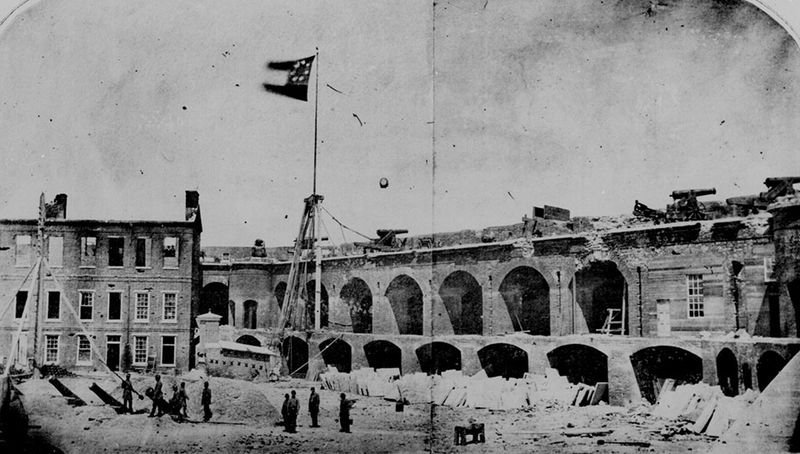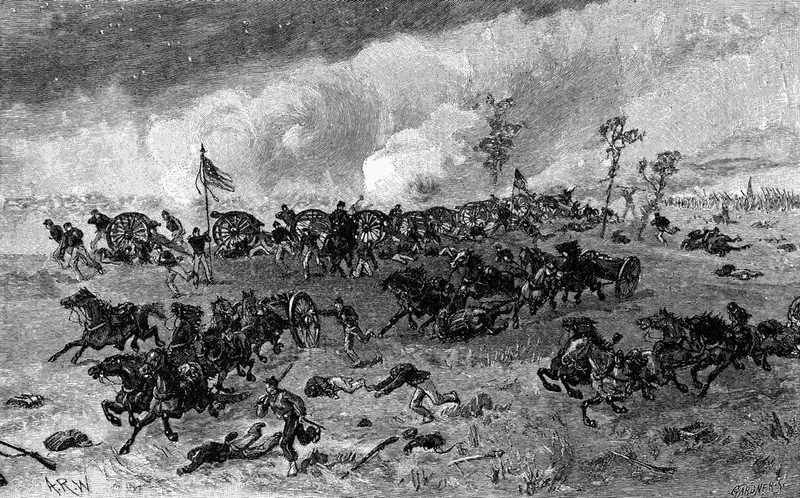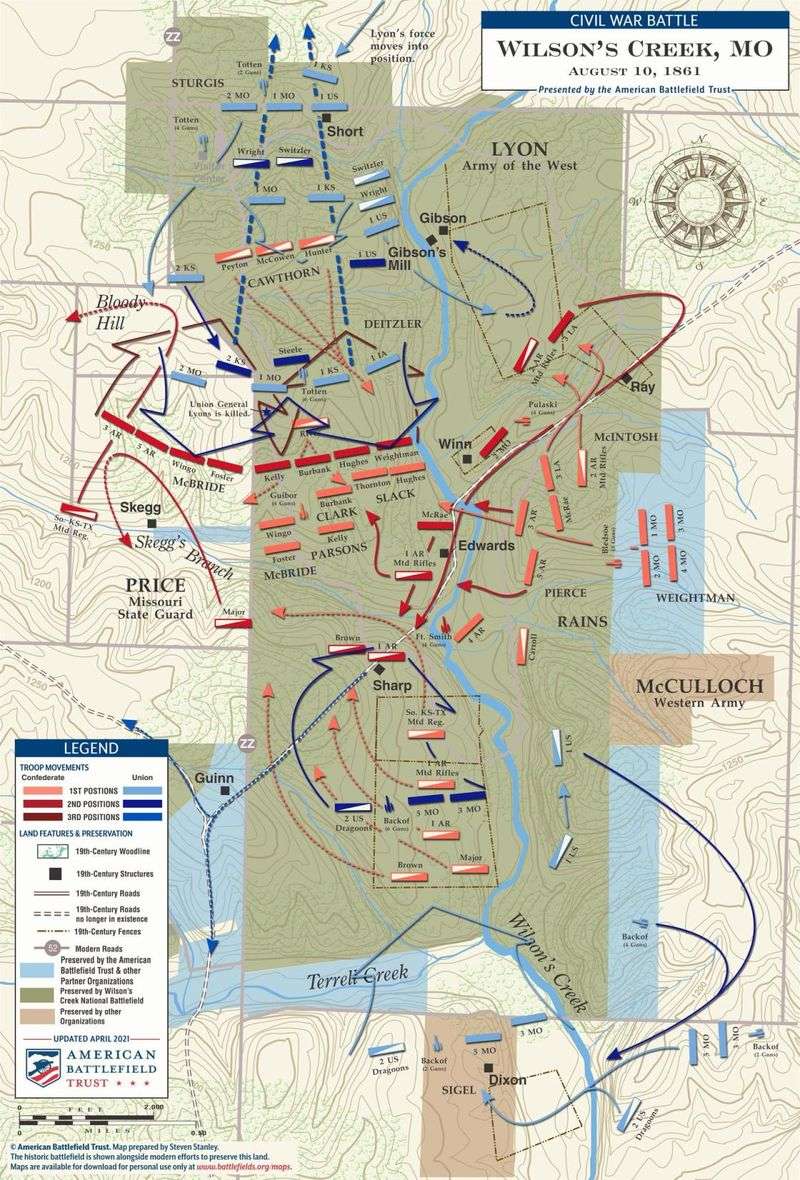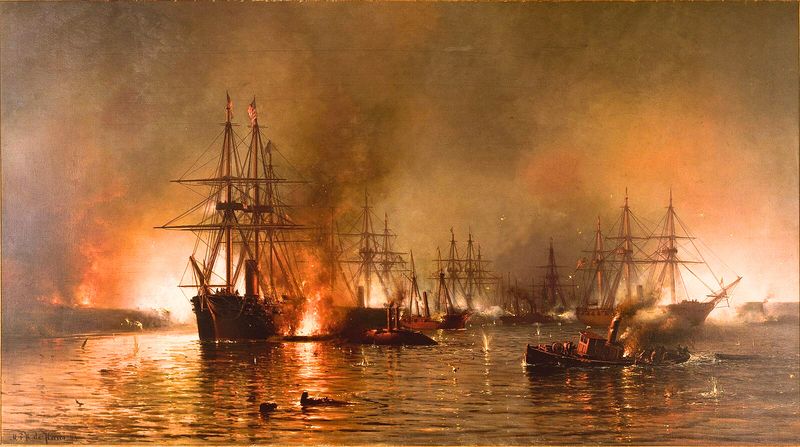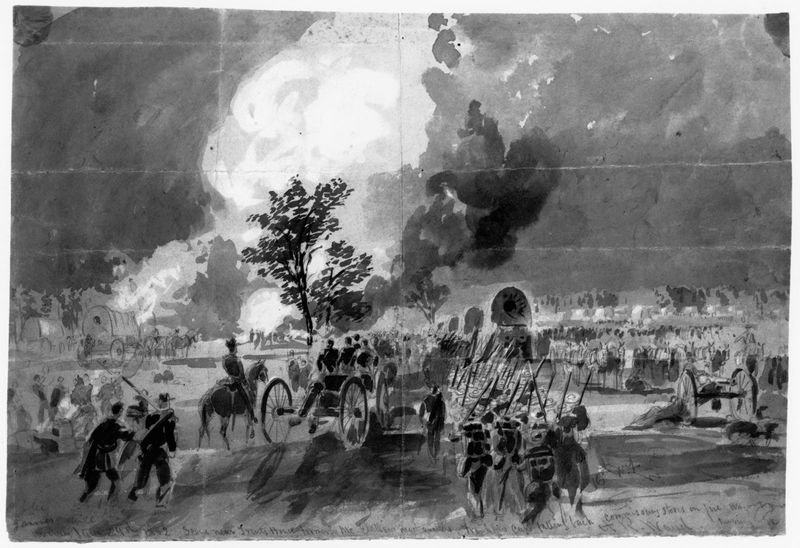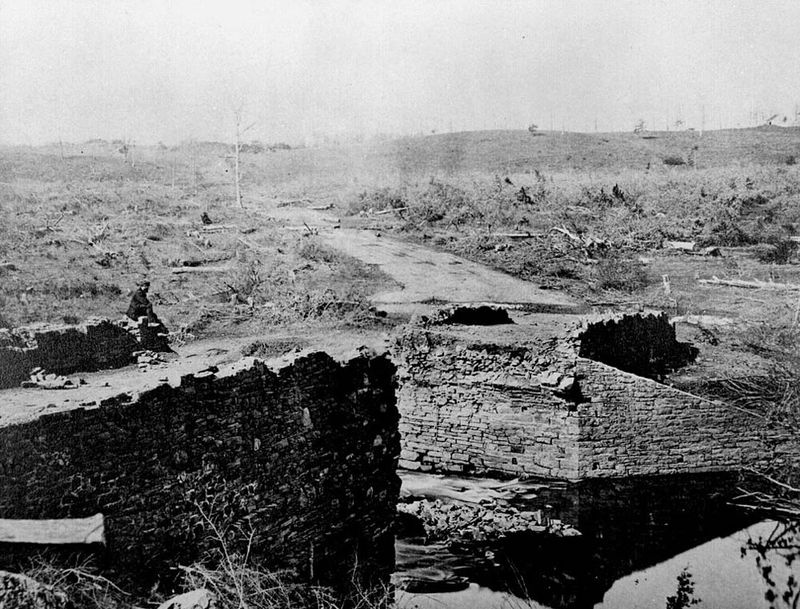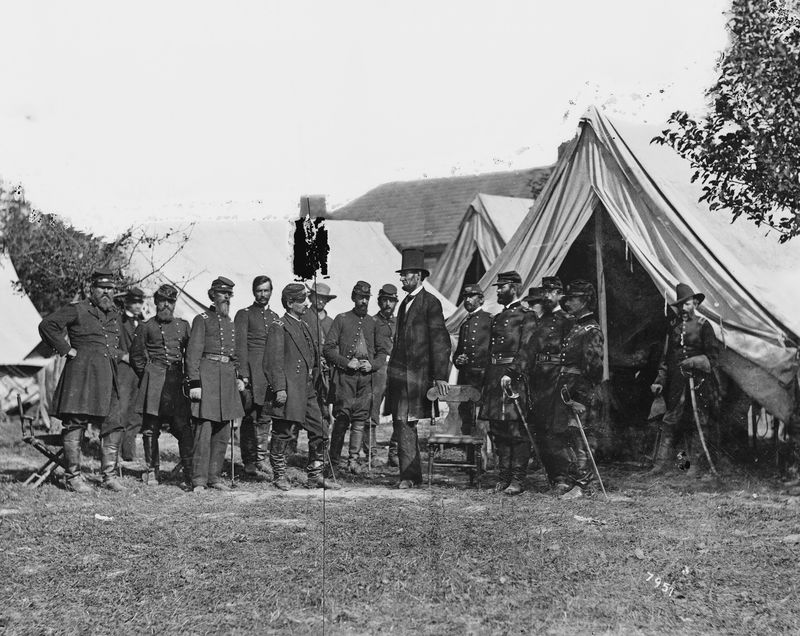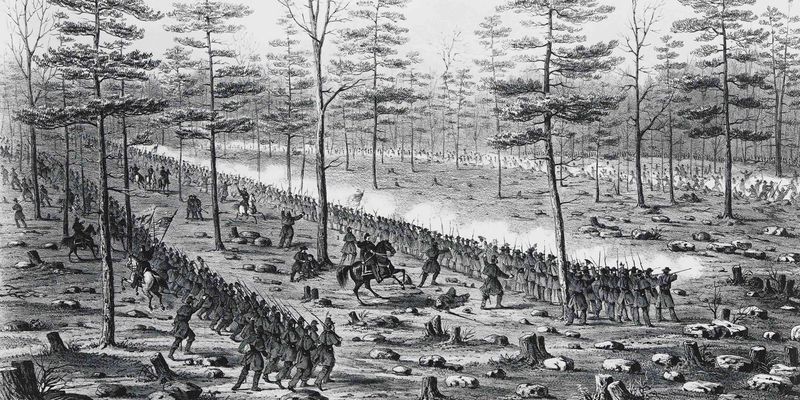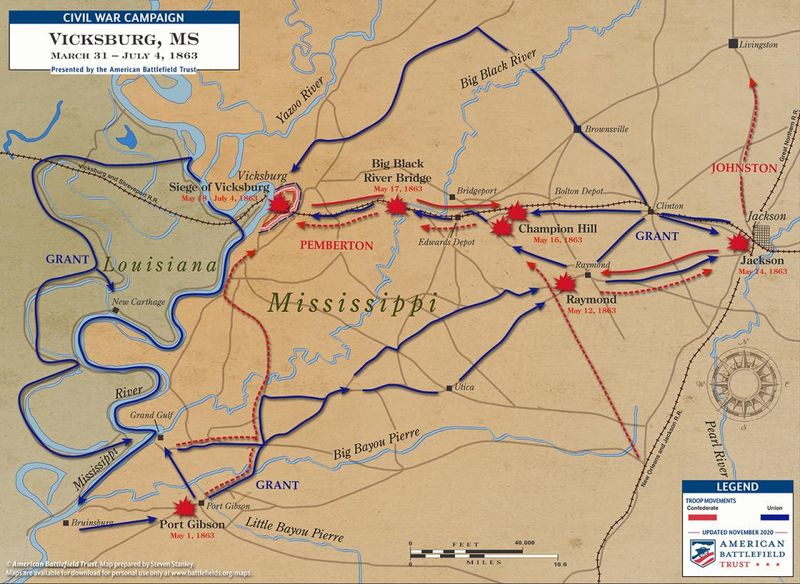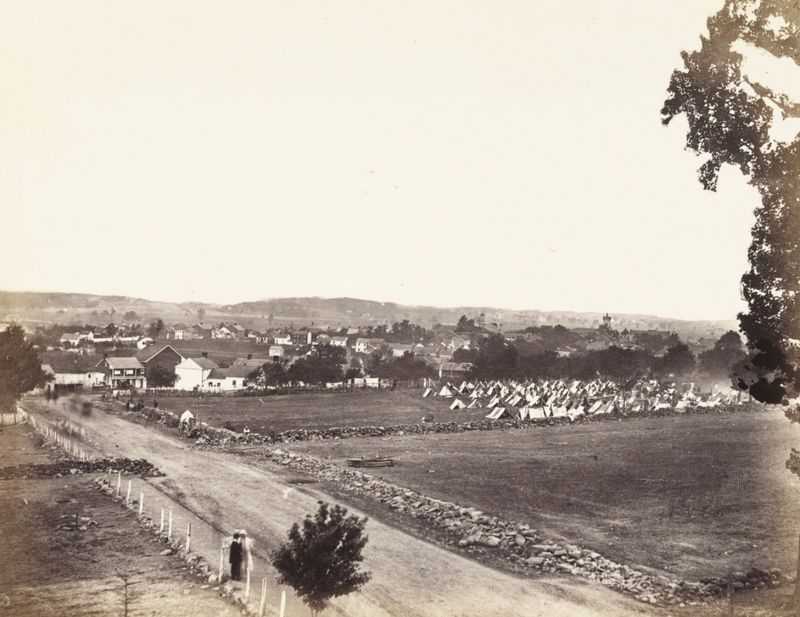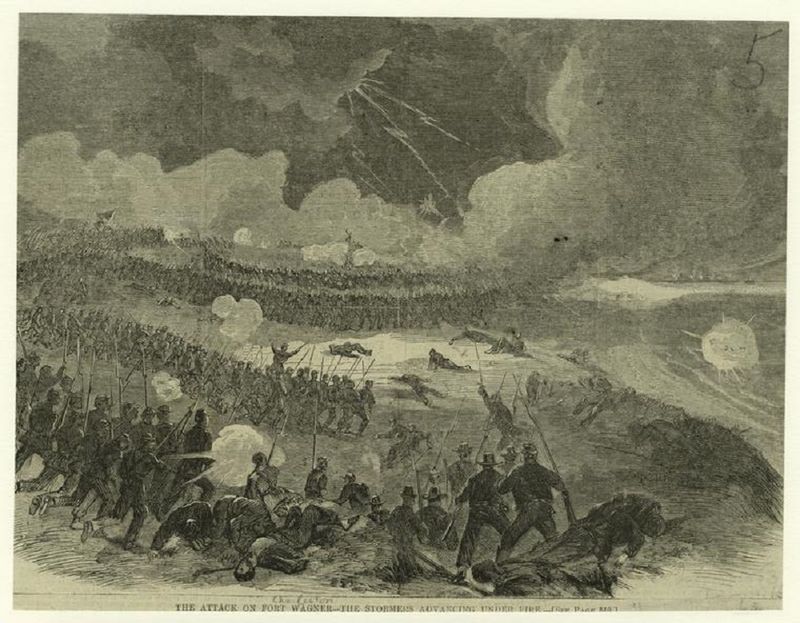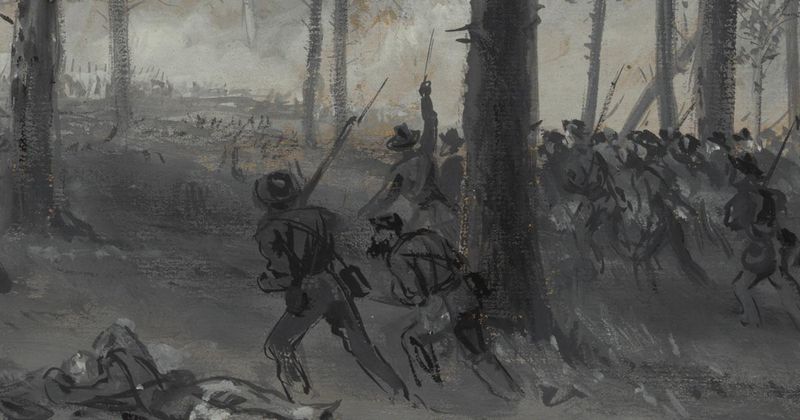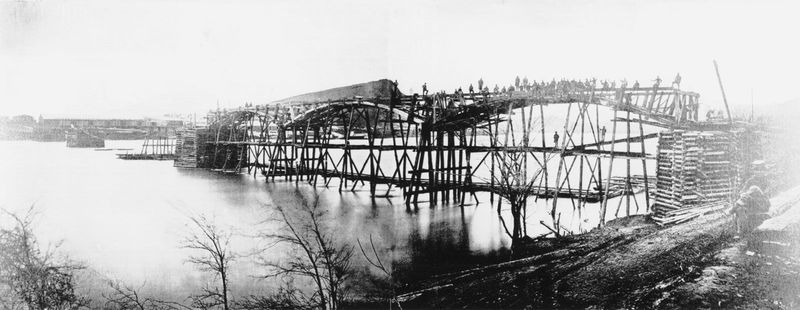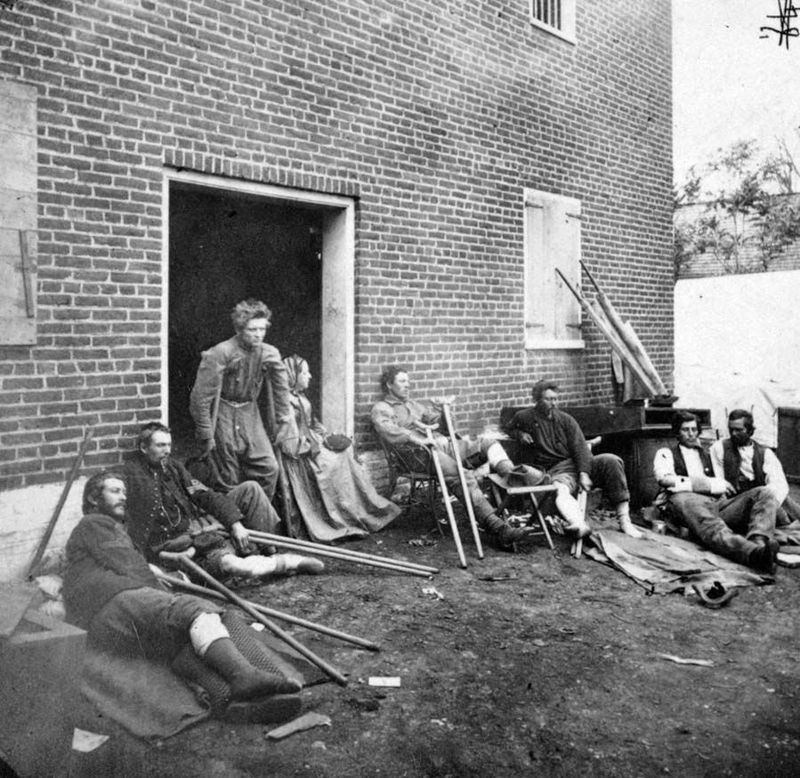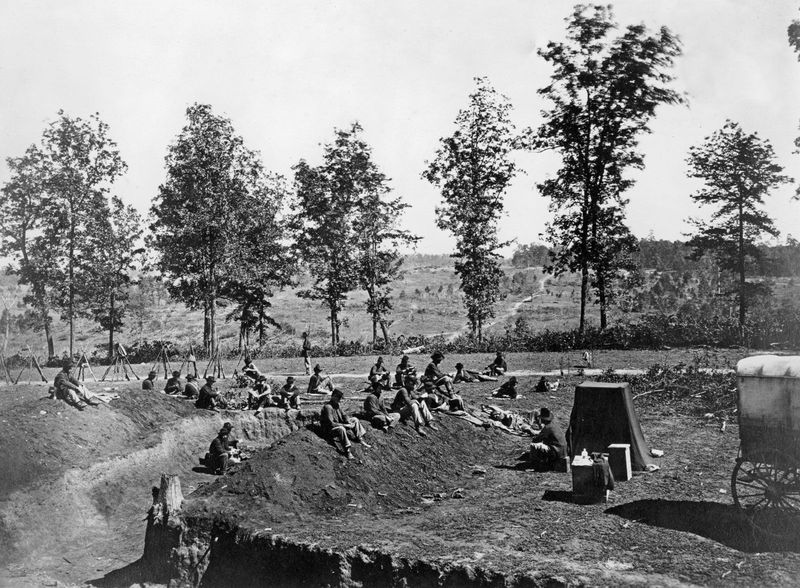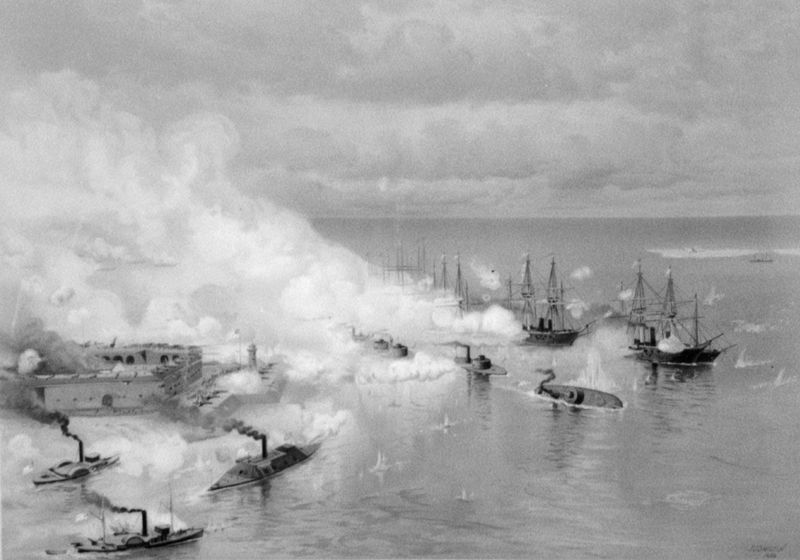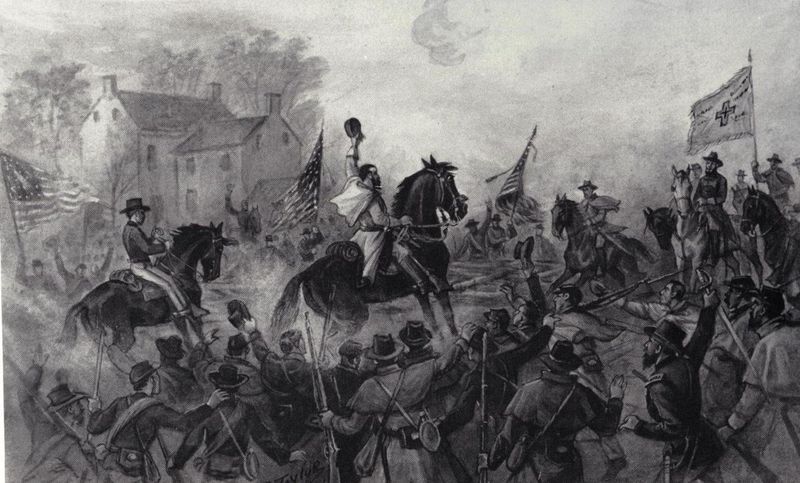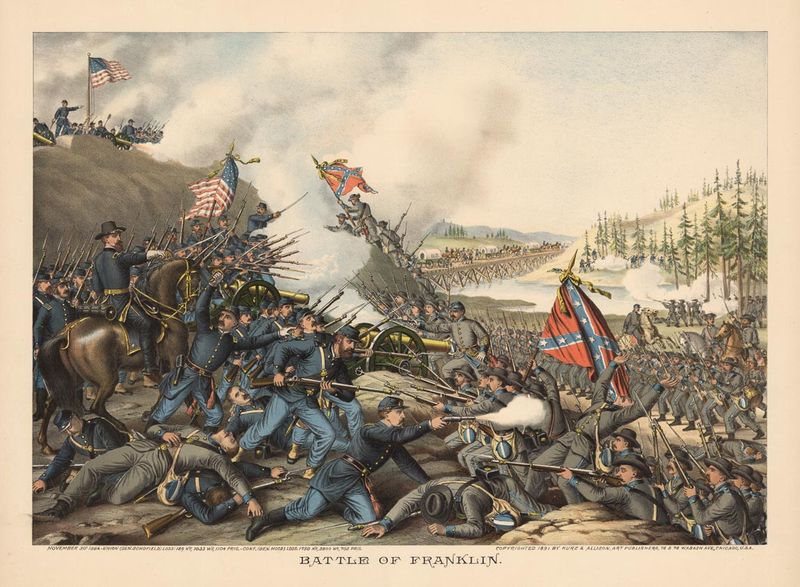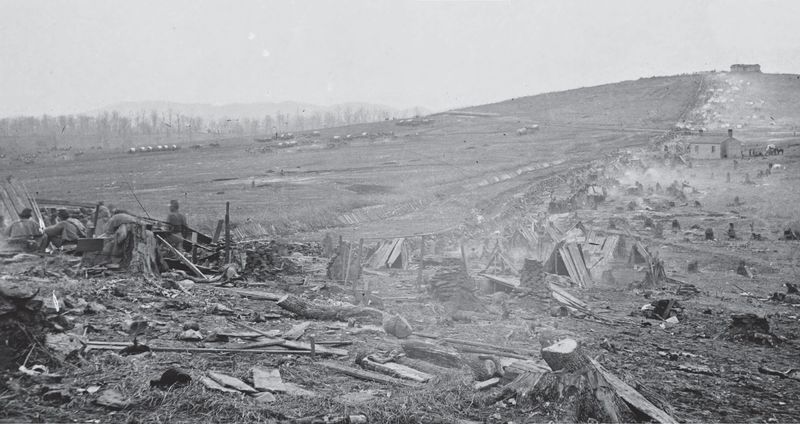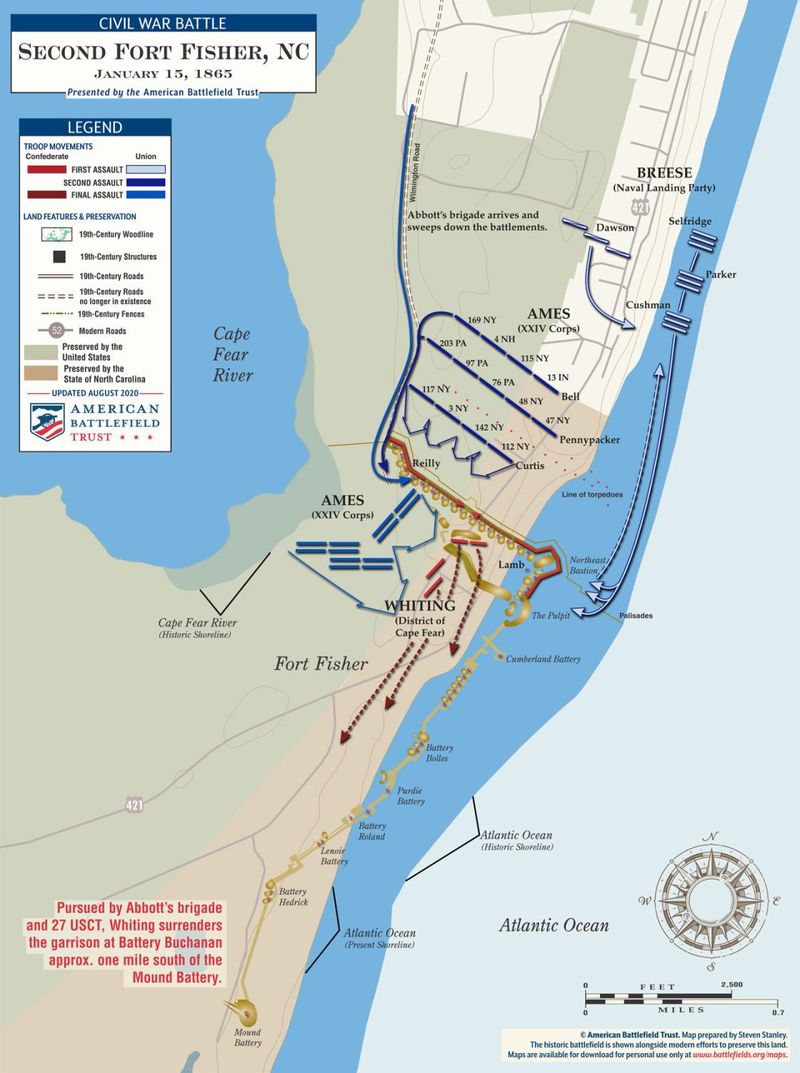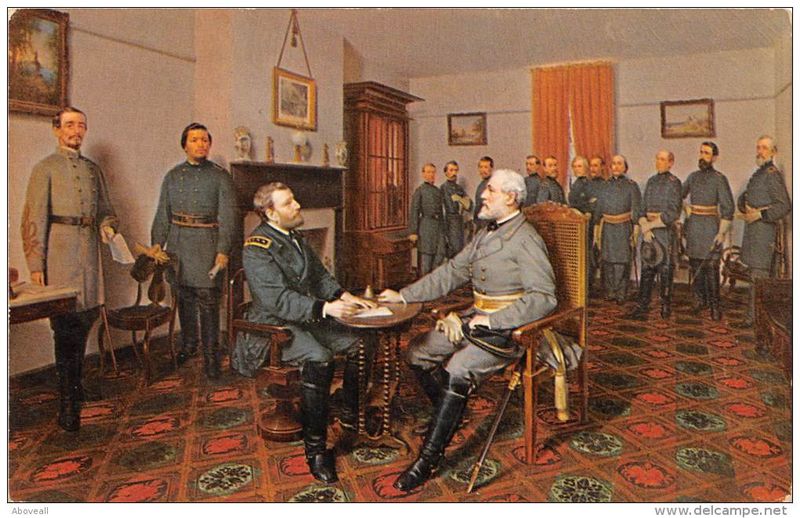The American Civil War, a defining chapter in U.S. history, was marked by numerous battles that had profound impacts on the nation’s future.
From the first shots at Fort Sumter to the surrender at Appomattox Court House, these battles shaped the course of history. In this blog post, we delve into 27 pivotal battles that forever altered the landscape of the United States.
1. Battle of Fort Sumter
The Battle of Fort Sumter marked the beginning of the American Civil War in April 1861. Located in Charleston Harbor, South Carolina, Fort Sumter became the focal point of the burgeoning conflict between the Union and the Confederacy.
Confederate forces, eager to assert their authority, opened fire on the fort, leading to a 34-hour bombardment. The fort, held by Union troops, eventually succumbed, signaling the start of a long and brutal war.
This battle not only ignited the flames of war but also set the stage for the four years of conflict that followed. The echoes of these first shots reverberated across the nation, galvanizing both sides for the struggles ahead.
2. First Battle of Bull Run (Manassas)
The First Battle of Bull Run, also known as Manassas, shattered any illusions of a brief conflict. In July 1861, Union and Confederate forces clashed near Manassas, Virginia.
The battle, characterized by confusion and intense fighting, saw inexperienced troops on both sides struggle to gain the upper hand. Ultimately, the Confederates secured a surprising victory, sending Union troops retreating in disarray towards Washington, D.C.
This early Confederate triumph highlighted the unpreparedness of both sides and set the tone for the protracted and bloody war that lay ahead. The battle underscored the need for better training and organization as the war continued.
3. Battle of Wilson’s Creek
The Battle of Wilson’s Creek, fought in August 1861, played a pivotal role in securing Missouri for the Union. Located near Springfield, Missouri, the battle saw Union forces under General Nathaniel Lyon confront Confederate troops led by General Sterling Price.
Despite being outnumbered, Lyon launched a daring attack, resulting in intense combat on Bloody Hill. Although the Confederates claimed victory, the Union’s strategic position in Missouri remained intact.
This battle demonstrated the significance of controlling border states and the fierce determination of both sides to dominate this crucial region. The sacrifices made at Wilson’s Creek laid the groundwork for future conflicts in the Western Theater.
4. Battle of Hampton Roads
The Battle of Hampton Roads in March 1862 marked a revolutionary moment in naval warfare. The clash between the ironclad ships USS Monitor and CSS Virginia (formerly Merrimack) demonstrated the obsolescence of wooden warships.
In Virginia’s waters, these innovative vessels engaged in a fierce duel, their ironclad hulls resisting conventional cannon fire. Although the battle ended in a stalemate, it forever changed naval strategy and ship design worldwide.
This encounter heralded the dawn of a new era, with ironclad warships becoming the standard. The lessons learned in this battle influenced naval engagements for generations, shaping the future of maritime conflict.
5. Battle of Shiloh
The Battle of Shiloh, fought in April 1862 in Tennessee, shocked both Union and Confederate forces with its brutality and high casualties. General Ulysses S. Grant led Union forces against Confederate troops under Generals Albert Sidney Johnston and P.G.T. Beauregard.
The two-day battle saw fierce fighting in wooded terrain, with soldiers enduring relentless gunfire and artillery barrages. Though the Union emerged victorious, the staggering human cost, with over 23,000 casualties, underscored the war’s increasing ferocity.
The battle revealed the need for better medical care and battlefield tactics, setting the stage for future engagements in the Western Theater.
6. Battle of New Orleans
The Battle of New Orleans in April 1862 was a significant Union victory that delivered a severe blow to the Confederacy’s economy. Led by Flag Officer David Farragut, Union naval forces launched a daring assault on the vital port city.
Overcoming Confederate defenses along the Mississippi River, Farragut’s fleet captured New Orleans, severing a crucial supply line for the South.
This victory not only bolstered Northern morale but also demonstrated the strategic importance of controlling key waterways. The loss of New Orleans crippled the Confederacy’s ability to trade and transport goods, marking a turning point in the war’s Western Theater.
7. Seven Days Battles
The Seven Days Battles in June and July 1862 marked the emergence of General Robert E. Lee as the Confederacy’s top military leader. Over seven intense days, Lee’s forces engaged Union troops led by General George McClellan in a series of battles near Richmond, Virginia.
Despite being outnumbered, Lee’s aggressive tactics forced the Union to retreat, saving the Confederate capital. These battles showcased Lee’s strategic brilliance and instilled confidence in the Confederate cause.
The Union’s failure to capture Richmond highlighted the challenges of waging war in the Eastern Theater, setting the stage for further confrontations between these two formidable adversaries.
8. Second Battle of Bull Run
The Second Battle of Bull Run, fought in August 1862, cemented General Robert E. Lee’s dominance in the Eastern Theater. Building on his earlier successes, Lee’s forces clashed with Union troops under General John Pope near Manassas, Virginia.
The battle saw intense fighting, with both sides grappling for control. Lee’s tactical acumen and aggressive maneuvers overwhelmed the Union, forcing them into a hasty retreat.
This Confederate victory solidified Lee’s reputation as a brilliant commander and pushed the war into Maryland. The Union’s defeat at Bull Run prompted a reevaluation of their strategies and leadership as the war continued.
9. Battle of Antietam
The Battle of Antietam, fought on September 17, 1862, remains the bloodiest single day in American history. Located near Sharpsburg, Maryland, the battle saw Union forces under General George McClellan confront General Robert E. Lee’s Confederate army.
The day-long clash resulted in heavy casualties on both sides, with over 22,000 soldiers killed, wounded, or missing. Though tactically inconclusive, the battle provided President Abraham Lincoln the opportunity to issue the Emancipation Proclamation, redefining the war’s purpose.
Antietam marked a turning point, bolstering Northern morale and dissuading European powers from recognizing the Confederacy. The sacrifices made on this day echoed through history.
10. Battle of Fredericksburg
The Battle of Fredericksburg in December 1862 was a devastating Union defeat, underscoring the challenges of leadership and planning. General Ambrose Burnside led the Union Army against entrenched Confederate forces under General Robert E. Lee.
The Union’s attacks on fortified positions along Marye’s Heights resulted in staggering casualties, with little gain. This battle highlighted the perils of frontal assaults against well-defended positions and the importance of effective reconnaissance and strategy.
The Union’s failure at Fredericksburg exposed vulnerabilities in military leadership, prompting changes that would influence future battles. The Confederate victory reinforced their resolve to defend their territory.
11. Battle of Stones River
The Battle of Stones River, fought from December 31, 1862, to January 2, 1863, provided a morale boost for the Union after a series of defeats. Located near Murfreesboro, Tennessee, the battle saw Union forces under General William Rosecrans engage Confederate troops led by General Braxton Bragg.
Heavy fighting ensued in the cold winter landscape, with both sides suffering significant casualties. Despite initial setbacks, the Union’s resilience led to a strategic victory, forcing the Confederates to withdraw.
The triumph at Stones River bolstered Northern spirits and highlighted the importance of determination and perseverance in the face of adversity.
12. Battle of Chancellorsville
The Battle of Chancellorsville in May 1863 is often hailed as General Robert E. Lee’s greatest victory, but it came at a significant cost. Lee’s forces, though outnumbered, executed a daring flanking maneuver, surprising Union troops under General Joseph Hooker.
The dense Virginia wilderness became a battleground, with Confederate forces achieving a stunning victory. However, the loss of General “Stonewall” Jackson, who was mortally wounded by friendly fire, cast a shadow over the triumph.
Chancellorsville showcased Lee’s tactical brilliance, but it also underscored the unpredictability and human cost of war, setting the stage for future confrontations.
13. Battle of Vicksburg
The Battle of Vicksburg, culminating in July 1863, was a turning point in the Civil War, giving the Union control of the Mississippi River. Led by General Ulysses S. Grant, Union forces besieged the vital city for over 40 days, cutting off Confederate supplies and reinforcements.
The relentless bombardment and encirclement forced the Confederate garrison to surrender. This victory effectively split the Confederacy in two, severing crucial supply lines and boosting Northern morale.
The fall of Vicksburg, coupled with the Union victory at Gettysburg, marked a shift in the war’s momentum, paving the way for Union advances in the Western Theater.
14. Battle of Gettysburg
The Battle of Gettysburg, fought from July 1 to 3, 1863, stands as one of the Civil War’s most pivotal and iconic battles. Located in Pennsylvania, the clash saw Union forces under General George Meade confront General Robert E. Lee’s invading Confederate army.
The three-day battle featured intense combat across fields and ridges, culminating in the infamous Pickett’s Charge. The Union’s victory ended Lee’s northern invasion and marked a turning point in the Eastern Theater.
President Abraham Lincoln’s Gettysburg Address, delivered months later, further immortalized the battle’s significance, underscoring the principles of liberty and equality at the war’s core.
15. Battle of Fort Wagner
The Battle of Fort Wagner in July 1863 is renowned for the valor displayed by the 54th Massachusetts Infantry Regiment, one of the first African American units in the Union Army.
Located near Charleston, South Carolina, the assault on the heavily fortified Confederate position was a daunting task. Despite facing overwhelming odds, the 54th led the charge, demonstrating extraordinary courage and determination.
Though the attack was repelled, the bravery of these soldiers challenged prevailing prejudices and proved the vital role of Black troops in the Union’s fight for freedom. The legacy of Fort Wagner endures as a testament to their sacrifice and heroism.
16. Battle of Chickamauga
The Battle of Chickamauga, fought in September 1863, was a rare Confederate victory in the Western Theater, but it didn’t halt Union advances.
Located in northern Georgia, the battle saw Confederate forces under General Braxton Bragg clashing with Union troops led by General William Rosecrans. The dense woodland became a chaotic battleground, with both sides suffering heavy casualties.
Despite initial Confederate success, logistical challenges and internal conflicts prevented them from capitalizing on their victory.
The battle underscored the complexity of military operations and highlighted the resilience of Union forces, who regrouped and continued their push into the South.
17. Battle of Chattanooga
The Battle of Chattanooga, fought in November 1863, opened the Deep South to Union invasion, marking a strategic turning point. Union forces, under General Ulysses S. Grant, faced Confederate troops entrenched on the high ground of Lookout Mountain and Missionary Ridge.
Despite the challenging terrain, Union soldiers executed daring assaults, culminating in a decisive victory. This triumph dismantled Confederate defenses and paved the way for Sherman’s Atlanta Campaign.
The victory at Chattanooga demonstrated the effectiveness of coordinated military strategy and underscored the importance of controlling key transportation routes in the South. The path to victory in the Western Theater was now clear.
18. Battle of the Wilderness
The Battle of the Wilderness in May 1864 marked the beginning of General Ulysses S. Grant’s relentless Overland Campaign. Fought in the tangled forests of Virginia, the battle saw Union and Confederate forces clash in a chaotic and brutal struggle.
The dense underbrush and thick smoke from the fighting created a hellish environment, complicating tactics and visibility. Despite heavy casualties and a lack of clear victory, Grant’s determination to press forward signaled a shift in Union strategy.
The battle set the tone for the grueling battles to come, as Grant sought to wear down Confederate forces through relentless pressure and attrition.
19. Battle of Spotsylvania Court House
The Battle of Spotsylvania Court House, fought in May 1864, is famous for the brutal and intense fighting at the ‘Bloody Angle.’ As part of General Grant’s Overland Campaign, Union forces continued their push against entrenched Confederate troops led by General Robert E. Lee.
The battle saw relentless assaults and counterattacks, particularly at the ‘Bloody Angle,’ where combat raged for nearly 20 hours. The horrific conditions and staggering casualties underscored the war’s ferocity and the Union’s commitment to wearing down Confederate resistance.
Spotsylvania highlighted the relentless nature of Grant’s strategy and the immense sacrifices made by soldiers on both sides.
20. Battle of Cold Harbor
The Battle of Cold Harbor in June 1864 was a sobering reminder of the perils of frontal assaults. Part of Grant’s Overland Campaign, Union forces launched a series of attacks against well-fortified Confederate positions.
The result was a disastrous Union defeat, with thousands of casualties in a matter of minutes. The battle’s futility and high cost haunted Grant, leading to a reevaluation of tactics.
Cold Harbor emphasized the importance of reconnaissance and careful planning in modern warfare. Despite the setback, Grant’s resolve remained unshaken, and the Union’s strategic objectives continued to guide their efforts in the Eastern Theater.
21. Battle of Atlanta
The Battle of Atlanta, fought in July 1864, was a key Union victory that bolstered President Lincoln’s re-election prospects and signaled the Confederacy’s decline. Led by General William T. Sherman, Union forces launched a series of assaults to capture the vital city.
Despite determined Confederate resistance, the Union’s strategic maneuvering and superior artillery prevailed. The fall of Atlanta dealt a severe blow to Southern morale and infrastructure, undermining the Confederate war effort.
The victory highlighted the effectiveness of Sherman’s tactics and paved the way for his infamous March to the Sea, further hastening the Confederacy’s collapse.
22. Battle of Mobile Bay
The Battle of Mobile Bay in August 1864 is famous for Admiral David Farragut’s command, ‘Damn the torpedoes, full speed ahead!’ as he led his fleet into the heavily mined bay.
The Union’s naval assault aimed to capture this strategic port and close off one of the last major Confederate supply routes. Despite facing formidable defenses, including fortifications and the ironclad CSS Tennessee, Farragut’s bold tactics secured a crucial victory.
The fall of Mobile Bay deprived the Confederacy of a critical supply line and demonstrated the Union Navy’s growing dominance. The iconic command became a symbol of courage and determination in the face of adversity.
23. Battle of Cedar Creek
The Battle of Cedar Creek in October 1864 was a decisive Union victory that helped secure the Shenandoah Valley. Confederate forces, under General Jubal Early, launched a surprise attack on Union troops led by General Philip Sheridan.
Despite initial setbacks, Sheridan’s arrival on the battlefield rallied his troops, turning a potential defeat into a resounding victory. The Union’s triumph at Cedar Creek not only solidified their control of the valley but also boosted Northern morale.
This victory underscored the importance of leadership and resilience in the face of adversity, contributing to the eventual Union victory in the Civil War.
24. Battle of Franklin
The Battle of Franklin in November 1864 was a devastating Confederate defeat that nearly destroyed the Army of Tennessee. Confederate forces under General John Bell Hood launched a series of aggressive assaults against fortified Union positions near Franklin, Tennessee.
Despite their bravery, the Confederate soldiers faced withering fire and suffered immense casualties. The Union’s steadfast defense resulted in significant Confederate losses, crippling their ability to conduct further offensives.
The battle highlighted the futility of frontal assaults against well-prepared defenses and underscored the challenges faced by the Confederacy in the war’s final stages.
25. Battle of Nashville
The Battle of Nashville in December 1864 effectively ended the Confederate presence in the Western Theater. Union forces, under General George Thomas, launched a well-coordinated assault on the remnants of the Confederate Army of Tennessee, commanded by General John Bell Hood.
The battle saw Union troops break through Confederate lines, leading to a decisive victory. The defeat shattered the Confederate army, marking a significant turning point in the war.
Nashville underscored the effectiveness of coordinated military strategy and the importance of maintaining momentum in the Union’s campaign. The victory paved the way for further advances and the eventual conclusion of the war.
26. Battle of Fort Fisher
The Battle of Fort Fisher in January 1865 sealed off the last major Confederate port at Wilmington, North Carolina. Union forces, led by Major General Alfred Terry and Rear Admiral David Porter, launched a combined amphibious assault on the heavily fortified fort.
Despite fierce resistance, the Union’s overwhelming firepower and determination secured a crucial victory. The fall of Fort Fisher closed a vital supply route for the Confederacy, hastening their collapse.
This battle underscored the importance of joint military operations and highlighted the strategic significance of controlling key coastal positions. Fort Fisher’s capture marked a turning point in the final months of the war.
27. Battle of Appomattox Court House
The Battle of Appomattox Court House on April 9, 1865, marked the end of the Civil War with General Robert E. Lee’s surrender to General Ulysses S. Grant. After a series of Union victories and Confederate defeats, Lee’s army found itself surrounded and unable to continue fighting.
The meeting between Lee and Grant at the McLean House was conducted with dignity and respect, symbolizing the war’s conclusion. Grant’s generous terms of surrender helped facilitate national reconciliation and healing.
The surrender at Appomattox signaled the end of four years of brutal conflict, paving the way for a reunited nation and the long process of rebuilding.
